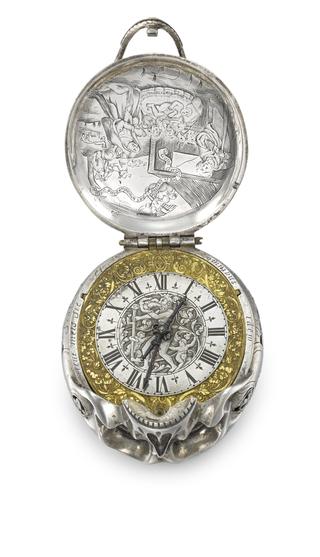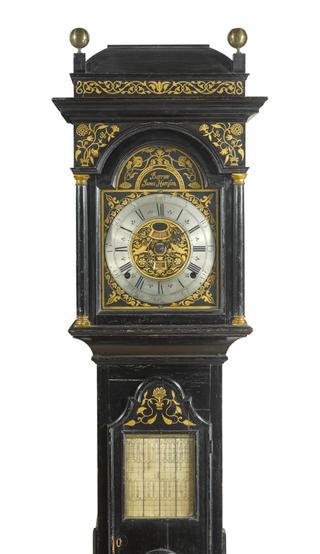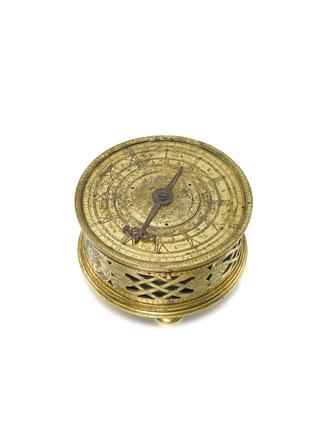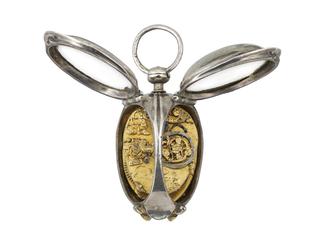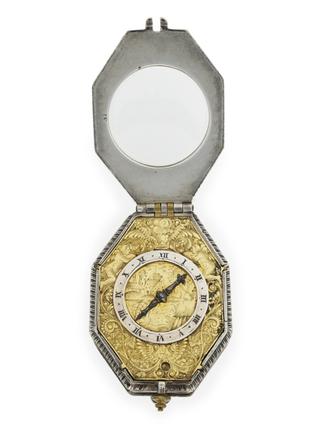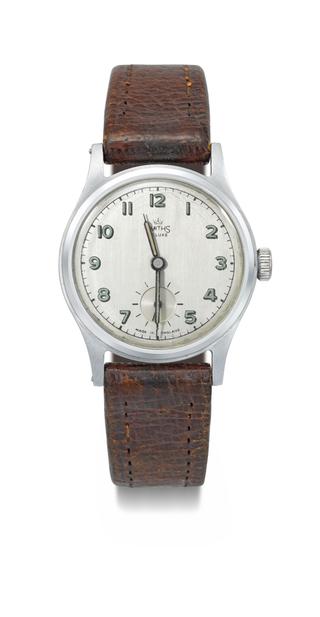
Watch movement with remontoir and two balance springs by Thomas Mudge
- maker:
- Thomas Mudge


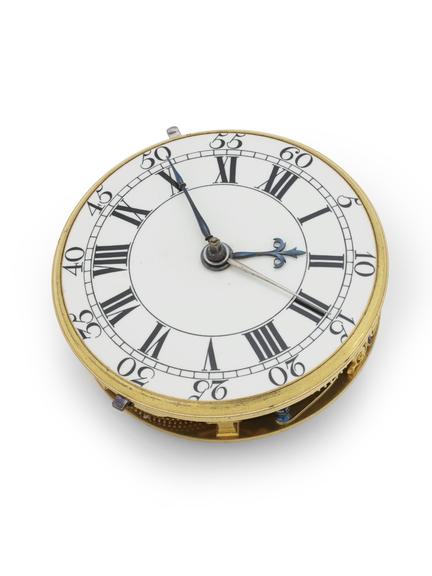

Watch movement numbered 260, by Thomas Mudge, London, 1755. White enamel dial with large minute figures and steel beetle hands and a centre seconds hand, placed between the hour and minute hands. The fusee movement contains a verge escapement, a remontoir, and balance with two balance springs; one with curb compensation and the other with regulator. The minute hand jumps forward once every minute. The fusee has no maintaining power, but a pivoted detent prevents the remontoir wheel from running back during winding. A stop acts on the wheel carrying the seconds hand, allowing it to be halted. When the stop is taken off a small hook engages with the wheel teeth, thus ensuring an immediate advance of the seconds hand. Signed on the movement 'Thos Mudge London 260'.
Originally sold to Ferdinand, King of Spain on August 22nd 1755. Presented to the Worshipful Company of Clockmakers by John Grant Jnr in 1850. Clockmakers' Museum No. 189
Details
- Category:
- Clockmakers
- Collection:
- The Worshipful Company of Clockmakers
- Object Number:
- L2015-3217
- Materials:
- silver (alloy), enamel, brass (copper, zinc alloy), steel (metal) and diamond
- Measurements:
-
overall: 41 mm x 49 mm x 25 mm,
- type:
- verge watch movement
- credit:
- Lent by the Worshipful Company of Clockmakers
